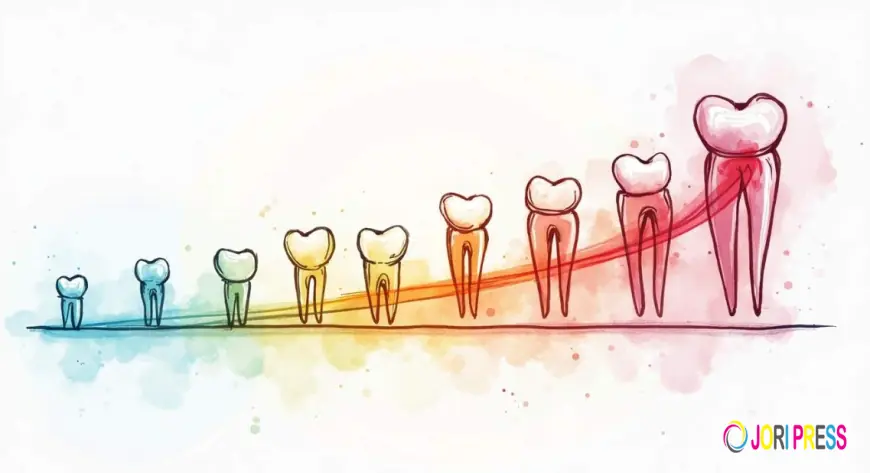Why Early Orthodontic Intervention Matters for Healthy Teeth

Imagine a child struggling to chew properly or feeling self-conscious about a crooked smile. These issues often trace back to dental problems that could have been addressed much earlier. Early orthodontic intervention isn’t just about aesthetics-it’s about setting the foundation for a lifetime of oral health.
What Is Early Orthodontic Intervention?
Early orthodontic intervention, sometimes called interceptive orthodontics, refers to the treatment of dental and jaw problems in children, typically between the ages of 6 and 10. This period is crucial because the child’s mouth, teeth, and jaws are still developing, making it easier to guide growth in a healthy direction.
Unlike traditional orthodontics, which often begins after all permanent teeth have erupted, early intervention focuses on identifying and correcting issues before they become more severe. This proactive approach can prevent more invasive treatments later on.
Why Start So Young?
Children’s bones are more malleable than adults’, which means orthodontists can influence the growth of the jaw and alignment of teeth more effectively. For instance, if a child has a narrow upper jaw, an orthodontist can use an expander to widen it, creating enough space for adult teeth to come in properly.
This early guidance can reduce crowding, correct bite problems, and even improve breathing issues linked to jaw structure. Waiting until all permanent teeth have erupted often means missing the window where growth can be easily directed.
In addition to physical benefits, early orthodontic intervention can also have psychological advantages. Children who experience dental misalignment or bite issues may feel self-conscious about their smiles, which can affect their confidence and social interactions. By addressing these concerns early, orthodontists can help children develop a positive self-image and encourage them to engage more freely with their peers. Furthermore, early intervention can foster a sense of responsibility in children regarding their oral health, as they learn the importance of maintaining proper alignment and hygiene from a young age.
Moreover, early orthodontic assessments can also identify potential issues that may not be immediately visible. For example, an orthodontist can spot problems related to jaw growth or tooth eruption patterns that could lead to complications later on. By utilizing advanced imaging techniques and thorough examinations, they can create a tailored treatment plan that not only addresses current concerns but also anticipates future dental needs. This foresight can significantly reduce the likelihood of requiring extensive orthodontic work in the teenage years, saving both time and financial resources for families. For expert advice and comprehensive care, you can visit Indental Castle Hill to ensure your child’s smile stays healthy and confident.
Common Issues Addressed by Early Intervention
Not every child needs orthodontic treatment at a young age, but certain warning signs can indicate when early intervention is beneficial. Recognizing these issues early can save time, money, and discomfort later on.
Crowded or Misaligned Teeth
When baby teeth fall out and adult teeth begin to emerge, there isn’t always enough space for them to align properly. This can lead to crowding, which not only affects appearance but also makes cleaning teeth more difficult, increasing the risk of cavities and gum disease.
Early intervention can create space for permanent teeth, reducing the need for extractions or complicated braces later. Additionally, addressing crowding early can enhance a child’s self-esteem, as they may feel more confident with a straighter smile during their formative years. Techniques such as space maintainers or partial braces can be employed to guide the growth of teeth into their ideal positions, ensuring a healthier mouth in the long run.
Crossbites, Overbites, and Underbites
Bite problems occur when the upper and lower teeth don’t meet correctly. A crossbite happens when some upper teeth sit inside the lower teeth when biting down, while an overbite or underbite refers to the vertical misalignment of the jaws.
These issues can cause uneven wear on teeth, jaw pain, and even difficulty speaking or chewing. Early treatment can guide jaw growth to correct these problems before they worsen. In some cases, orthodontic appliances such as expanders or retainers may be recommended to gradually shift the teeth and jaws into proper alignment. This proactive approach not only alleviates discomfort but also sets the stage for a more functional bite and a healthier jaw joint, potentially preventing more severe complications in adulthood.
Thumb Sucking and Other Habits
Prolonged thumb sucking or pacifier use can affect the shape of the jaw and alignment of teeth. Orthodontists can recommend appliances or strategies to help children break these habits early, preventing long-term damage.
Moreover, addressing thumb sucking early can also help in the development of proper speech patterns. Children who continue these habits into their later years may experience speech delays or difficulties, as the positioning of their teeth can impact how sounds are formed. Behavioral strategies, such as positive reinforcement or the introduction of alternative comfort objects, can be effective in helping children transition away from these habits, promoting not only dental health but also overall developmental progress.
Benefits Beyond Straight Teeth
Many people think orthodontics is only about achieving a perfect smile, but early intervention offers several health advantages that last a lifetime.
Improved Oral Hygiene
Crowded or crooked teeth create tight spaces where plaque and food particles can hide. This makes brushing and flossing difficult, increasing the risk of tooth decay and gum disease. By addressing alignment issues early, children can maintain cleaner teeth more easily. Furthermore, proper alignment allows for more effective cleaning techniques, reducing the likelihood of cavities and the need for future dental interventions. Regular dental visits become less stressful, as children are less likely to face complications from untreated dental issues.
Better Speech Development
Misaligned teeth and jaw problems can interfere with proper speech. Early orthodontic treatment can help correct these issues, allowing children to speak more clearly and confidently. This is particularly important during formative years when children are learning to communicate effectively. Additionally, improved speech can enhance a child's ability to participate in classroom discussions and social interactions, laying a strong foundation for academic success and personal relationships.
Enhanced Self-Esteem
Children who feel self-conscious about their teeth may avoid smiling or social interactions. Early correction of dental issues can boost confidence and positively impact social development. The psychological benefits of a straight smile can extend beyond childhood, influencing a person's self-image well into adulthood. As children grow, they may find themselves more willing to engage in new experiences, from trying out for school plays to making new friends, all because they feel good about their appearance.
Long-Term Health Benefits
Beyond aesthetics and confidence, early orthodontic treatment can contribute to long-term health benefits. Properly aligned teeth and jaws can improve overall oral function, making it easier to chew and digest food effectively. This can lead to better nutrition, as children are more likely to eat a balanced diet when they can comfortably consume a variety of foods. Additionally, addressing orthodontic issues early can help prevent more serious problems later in life, such as jaw pain or temporomandibular joint (TMJ) disorders, which can arise from misalignment and improper bite.
Improved Facial Aesthetics
Orthodontics not only straightens teeth but also plays a significant role in shaping facial structure. Proper alignment of teeth and jaws contributes to a balanced facial profile, which can enhance a child's overall appearance. This can lead to positive social interactions, as facial aesthetics often influence first impressions. As children grow into their teenage years and beyond, having a well-aligned smile can open doors in both personal and professional realms, making them feel more at ease in various situations.
What to Expect During Early Orthodontic Treatment
Parents often wonder what early orthodontic treatment involves and how it affects their child’s daily life. Understanding the process can ease concerns and help families make informed decisions.
Initial Evaluation
The first step is a thorough dental examination, usually around age 7. The orthodontist will assess the child’s teeth, jaw development, and bite. X-rays and impressions may be taken to get a complete picture.
Customized Treatment Plan
Not every child will require immediate treatment. Some may just need monitoring, while others will benefit from appliances like expanders, partial braces, or retainers designed for growing mouths.
Duration and Maintenance
Early treatment can last from several months to a couple of years, depending on the complexity of the issue. Regular check-ups ensure the treatment is progressing as planned. Most appliances are removable or minimally intrusive, allowing children to eat and speak comfortably.
Preventing More Complex Problems Later
One of the strongest arguments for early orthodontic intervention is its ability to prevent more severe problems that require extensive and costly treatment in adolescence or adulthood.
Reducing the Need for Extractions
When teeth are severely crowded, removing some permanent teeth is sometimes necessary to create space. Early intervention can often avoid this by guiding jaw growth and creating room for incoming teeth.
Minimizing Jaw Surgery
Severe bite problems sometimes require surgical correction. Correcting jaw alignment early can reduce or eliminate the need for surgery later on.
Saving Time and Money
Addressing issues early can shorten or simplify later orthodontic treatment. This means fewer appointments, less discomfort, and lower overall costs.
When to Consult an Orthodontist
It’s a good idea to have children evaluated by an orthodontist no later than age 7. This doesn’t mean treatment will start immediately, but early assessment allows the orthodontist to identify potential problems and plan accordingly.
Parents should watch for signs like difficulty chewing, mouth breathing, speech delays, thumb sucking beyond age 4, or visible misalignment. Bringing these concerns to a professional can make a big difference.
Final Thoughts
Early orthodontic intervention is more than just a cosmetic choice. It’s a strategic step toward ensuring healthy teeth, proper jaw development, and overall well-being. By catching and correcting problems early, children can enjoy better oral health and a confident smile that lasts a lifetime.
Waiting until problems become obvious often means more complicated treatment and longer recovery. If there’s any doubt about your child’s dental development, scheduling an orthodontic evaluation can be the best decision for their future.
What's Your Reaction?
 Like
0
Like
0
 Dislike
0
Dislike
0
 Love
0
Love
0
 Funny
0
Funny
0
 Angry
0
Angry
0
 Sad
0
Sad
0
 Wow
0
Wow
0


















































